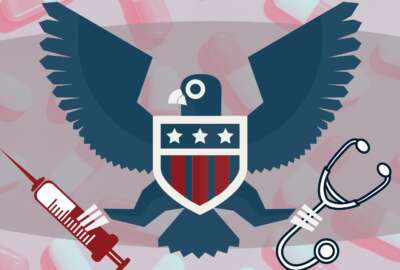
Minimal COVID impact on many federal health premiums
When the COVID pandemic hit, many predicted that premiums in the giant federal employee health benefits program would skyrocket.
When the COVID pandemic hit, many predicted that premiums in the giant federal employee health benefits program would skyrocket. But the average increase next year will be 2.4%, less than the 3.6% rise this year and the 4% uptick in 2020. It’s the largest employer plan in the country covering 8.2 million current and former feds and their families. The Office of Personnel Management and the health plans in the program apparently did a very good job holding down premiums during a time of millions of premature deaths and long, expensive periods in hospitals for survivors.
FEHBP (Federal Employees Health Benefits Program) policy holders will have between Nov. 8 and Dec. 13 to pick a new plan or reenroll in their current plan. Most people in the program have about 30 plan choices, some with many options in the same plan. Workers and retirees will have the choice of nationwide fee-for-service plans plus dozens of local health maintenance organizations, often with even lower premiums. Uncle Sam will pay about 70% of the total premium for most workers and retirees, and an even larger share for postal workers. Nobody can be turned down because of age, health or lifestyle. Anyhow who approaches the out-of-pocket maximum limit in his or her plan can switch to another plan.
The only disappointment in the new premiums is for S+1 (“self plus one”) plan enrollees.
Couples without children who hoped to save big bucks on their 2021 federal health plan got another dose of bad news yesterday when premiums for next year’s coverage were announced by OPM. In most cases, the self plus one enrollees will pay only slightly less for their coverage than people with large families. The self plus one concept was introduced a few years ago after a long fight to force the nation’s biggest health plan to offer an option between self-only and family coverage where the family could be 10 or more. At the time, experts warned the self plus one lobby that over time there would be little difference in premiums. So far they have been correct.
During the lengthy legislative campaign to get self plus one added as an option, backers said its costs to insurance carriers would be less than a family plan, and that premiums would be adjusted accordingly. But experts in the industry, from the plans themselves to officials at OPM and the consumers’ checkbook guide to health plans, predicted that many older couples — active and retired, without dependent children — would take the self plus one option. Over time that could — and in fact has — proven true. So you can still pay less as a self plus one couple than a family plan. But not the savings they had hoped.
During the health insurance and benefits open season, we’ll have a series of columns and Wednesday 10 a.m. radio shows featuring Walton Francis. They literally wrote the book on best-buys for feds, postal workers, retirees and survivors.
Francis says that tens of thousands of people are paying too much — $1,000 to $2,000 — because they’ve remained in health plans whose premiums have increased dramatically over the years. He says it’s possible to get similar coverage at much lower premiums by switching to either a basic option of the same plan, or a different plan. He’ll also explain how people can save tens of thousands in premiums — as part of a savings account — with some of the HD (high deductible) and HSA (health savings account) plans.
For a look at the 2022 premiums for non-postal fee-for-service plans, click here.
Nearly Useless Factoid
When we breathe through our nose, we always inhale more air from one nostril than with the other one. This then changes every 15 minutes. Each nostril of the human nose is tuned to smell some odors better than others, and the specialization moves back and forth from one nostril to the other.
Source: Stanford University
Copyright © 2024 Federal News Network. All rights reserved. This website is not intended for users located within the European Economic Area.
Mike Causey is senior correspondent for Federal News Network and writes his daily Federal Report column on federal employees’ pay, benefits and retirement.
Follow @mcauseyWFED
Related Stories





